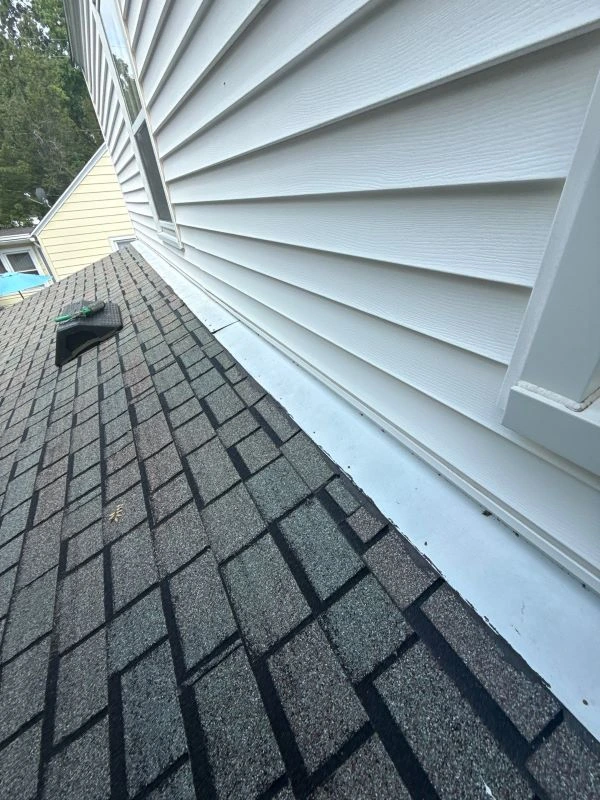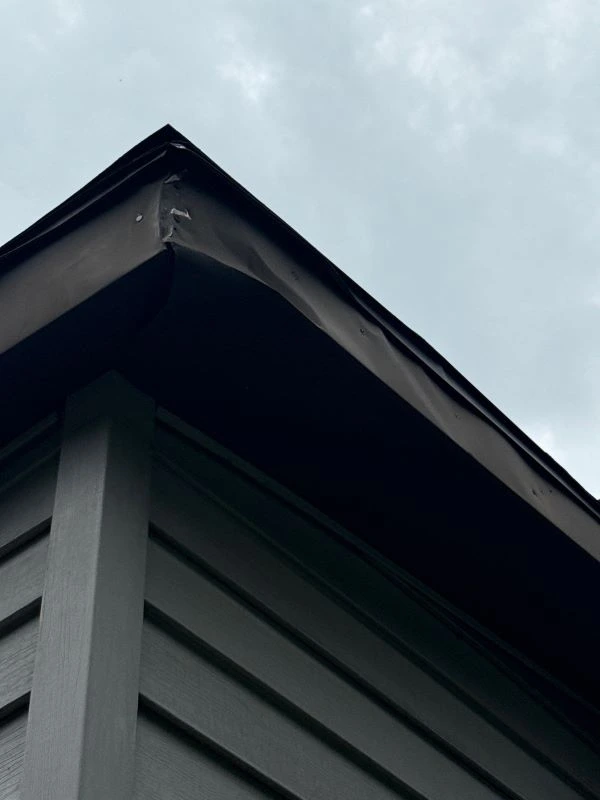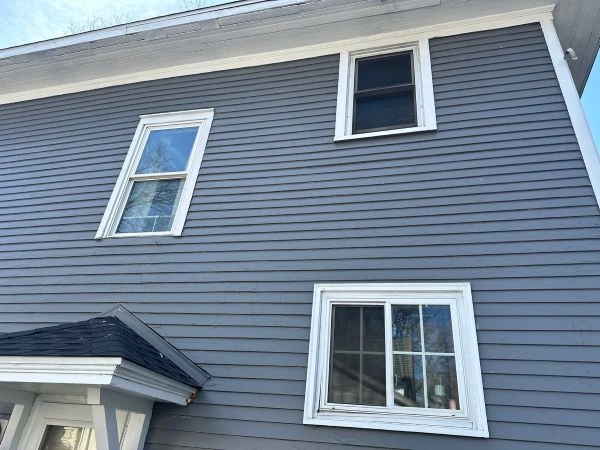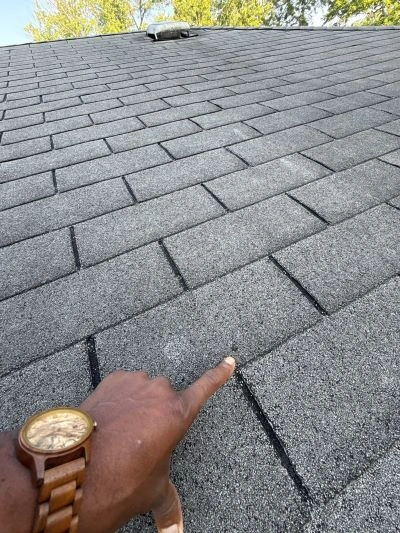How to Tell if Your Roof or Siding Is the Source of a Leak
When water seeps into your home, the damage can be both costly and frustrating. One of the most common culprits behind home leaks is either your roof or your siding. However, pinpointing the exact source isn’t always easy. As a trusted roofing siding company, we understand how important it is to identify the origin of leaks quickly and accurately to prevent further structural damage, mold growth, and expensive repairs.
In this comprehensive guide, we’ll explain how to tell if your roof or siding is causing leaks, what signs to look for, how to maintain these areas, and when to call in professional siding contractors or roofing experts for expert siding installation and repair services.

Common Signs Your Roof May Be the Source of a Leak
Water entering through the roof often shows distinct signs. Understanding these can help you take quick action:
- Ceiling Stains and Discoloration
Brown, yellow, or damp spots on ceilings often indicate a roof issue. This is caused when water penetrates roofing materials and seeps downward, usually after heavy rain or snow. - Water Dripping from Light Fixtures
If water is dripping from ceiling lights, it’s almost always a roof leak. This situation is dangerous because it combines water with electrical systems. - Shingle Damage
Missing, curled, cracked, or loose shingles expose your underlayment to water intrusion. After storms, walk around your home and visually inspect your roof for shingle damage. - Attic Moisture or Mold
Enter your attic and check for wet insulation, dark spots, or moldy smells. These indicate that water is leaking through the roof. - Ice Dams in Winter
In colder climates, ice dams can force melting snow back under shingles. This results in leaks that mimic siding damage but originate from the roof.
How to Tell if Siding Is the Source of a Leak
Leaks caused by damaged siding often appear differently than roof leaks. Here are the telltale signs:
- Water Stains on Interior Walls
If stains appear mid-wall rather than near the ceiling, your siding may be compromised. This is especially common around windows and doors. - Warped or Cracked Siding Panels
Warping, cracking, or bubbling in siding indicates moisture has penetrated behind it. Over time, this leads to mold and interior leaks. - Mold or Mildew on Walls
Siding that has gaps or poor sealing often allows moisture to seep into walls, encouraging mold growth on drywall or insulation. - Drafts and Higher Energy Bills
Damaged siding not only lets in water but also allows air leaks, which increase energy costs and reduce indoor comfort. - Pooling Water Near the Foundation
Poorly installed siding may direct water toward your foundation. Over time, this causes water to back up into walls, mimicking a leak.
DIY Leak Detection Tips
While hiring professionals from a roofing siding company is always the safest choice, homeowners can perform a few checks to narrow down the problem:
- Check the Attic After Rain
Use a flashlight to inspect your attic after a storm. Follow water stains upward to determine if the entry point is on the roof or siding. - Hose Test Your Siding
With a partner inside the home, spray water on one section of siding at a time. If water appears indoors, you’ve found the source. - Examine Gutters and Downspouts
Clogged gutters can push water behind siding or under shingles. Cleaning them regularly helps prevent leaks. - Inspect Flashing Around Windows and Chimneys
Loose or damaged flashing is a common source of water intrusion. Look for gaps or missing sealant. - Check for Exterior Gaps
Walk around your home and check siding joints, caulking, and trim for cracks or missing pieces where water could enter.
When to Call Professionals for Help
Sometimes DIY inspections aren’t enough. That’s where our team at Worthy Construction LLC comes in. As a trusted roofing siding company, we provide expert inspections, repairs, and expert siding installation to ensure your home is protected.
You should call professional siding contractors or roofers if:
- You notice widespread roof shingle damage after a storm.
- Your siding panels are warped, cracked, or rotting.
- Interior water damage is worsening despite your efforts.
- Mold growth is visible indoors.
- You’re experiencing repeated leaks in the same area.
How to Maintain Your Roof and Siding to Prevent Leaks
Prevention is always better than repair. Regular maintenance saves money, extends lifespan, and improves energy efficiency.
Roof Maintenance Tips
- Schedule professional roof inspections at least once a year.
- Clean gutters and downspouts every season.
- Replace damaged or missing shingles immediately.
- Ensure proper attic insulation and ventilation to reduce moisture buildup.
- Trim overhanging tree branches that can damage shingles during storms.
Siding Maintenance Tips
- Wash siding annually to remove dirt and mildew.
- Re-caulk around windows, doors, and trim as needed.
- Replace cracked or warped panels promptly.
- Paint or seal wood siding to protect against rot.
- Ensure landscaping and sprinklers don’t direct excess water at siding.
Signs You May Need a New Roof or Siding
Both roofs and siding have limited lifespans. Recognizing signs of failure early can save you from major damage.
Roof Replacement Signs
- Shingles are curling, cracking, or missing.
- The roof is over 20 years old.
- Frequent leaks occur despite repairs.
- Sagging rooflines or soft spots are visible.
Siding Replacement Signs
- Persistent water intrusion despite repairs.
- Significant warping, rotting, or mold growth.
- Your siding is faded, brittle, or over 25 years old.
- Increased energy bills due to poor insulation.
Why Choose Professional Roofing and Siding Services?
Hiring professional siding contractors or roofers ensures the job is done right the first time. At Worthy Construction LLC, we specialize in expert siding installation, roof repairs, and gutter systems that protect your home. Our team uses top-quality materials and proven techniques to provide long-lasting results.
Whether you’re searching for reliable emergency roof leak repair near me or considering a complete siding replacement, our team is ready to protect your home and keep it running efficiently.
FAQs
1. How can I tell if my roof or siding is leaking?
Check whether water stains appear on ceilings (roof issue) or mid-walls near windows and doors (siding issue). Attic inspections and siding hose tests can also help confirm the source.
2. Can clogged gutters cause leaks?
Yes. Blocked gutters force water under shingles or behind siding, mimicking a roof or siding leak. Regular gutter cleaning prevents this issue and reduces water damage risks.
3. Should I repair or replace damaged siding?
Small cracks can be repaired, but widespread warping, rot, or mold often require full siding replacement. Professional siding contractors can assess the severity and recommend the best solution.
4. How long does a roof or siding last?
Most asphalt roofs last 20–25 years, while siding can last 20–40 years depending on the material. Proper maintenance and timely repairs extend their lifespan.
5. Why hire professionals instead of DIY?
While DIY inspections are helpful, professionals provide precise leak detection, warranty-backed repairs, and expert siding installation that ensures long-term durability and protection.






Trustindex verifies that the original source of the review is Google. Worthy Construction just replaced my roof, skylights, and gutters. I live out of town and selling my parent's house so this company came through a personal referral. Khari and team were such a joy to work with. He answered my questions, kept me updated on progress, did everything he said he was going to do, and met all of commitments on time. It's not easy to know what's happening while living out of town and I appreciate Khari's communication skills, timeliness, and overall this has been an amazing experience! I highly recommend Worth Construction!!Trustindex verifies that the original source of the review is Google. Worthy Construction did an excellent job replacing our roof. They were very easy to work with throughout the entire process. They answered all of our questions promptly and delivered a great finished product. I’d highly recommend them for your roofing needs.Trustindex verifies that the original source of the review is Google. Very professional, great guy that will work with you. Highly recommended for sure. Mr. Worthy is very dependable! He completed our roof on time and as expected!Trustindex verifies that the original source of the review is Google. Greatest service ever! Super fast and did a fantastic job. I will definitely save them to do future jobs that need to be fixed. The greatest ever!Trustindex verifies that the original source of the review is Google. My roof was very damaged, I had a huge hole in my roof from constant tree debris and age. I didn’t have any expectations going in to the project but I was greatly impressed with the speed of service! The ten we done in 2 days! They cleaned up afterwards, the materials were great quality and . The team replaced my entire rooftop. Mr. Worthy was very respectful and responsive to my concerns regarding the project, I would certainly recommend his company to anyone looking for a new rooftop!Trustindex verifies that the original source of the review is Google. He was a pleasure to work with. They were prompt and professional the whole project. He kept me informed the whole process and his work was of the highest quality. They were very respectful of my and my neighbor's properties. I am very very happy with the work they did for me.Trustindex verifies that the original source of the review is Google. Quality work! Highly recommended!Trustindex verifies that the original source of the review is Google. I didn't have much word done, but I called after noticing a leak in my ceiling after a storm. Khari answered right away and was able to come and take a look within a couple days. He found the problem and was able to fix if with just caulking for no charge, 100% recommendTrustindex verifies that the original source of the review is Google. We had our roof and some gutters done by Worthy Construction and not only was it very timely, but they also were very friendly. We had the unfortunate experience of having to replace roof sooner than expected and they came and explained everything to us and then gave us options that really worked for us. Khari and his team did a wonderful job for us and I would recommend their service again and again. When they were working on our roof they noticed a leak in one of our gutters and replaced that as well which was very helpful!Trustindex verifies that the original source of the review is Google. I needed a roof replacement, Mr. Worthy worked with me and my insurance company from start to completion. He gave me a time frame and he stuck with it. High praise for him and his professional team.




